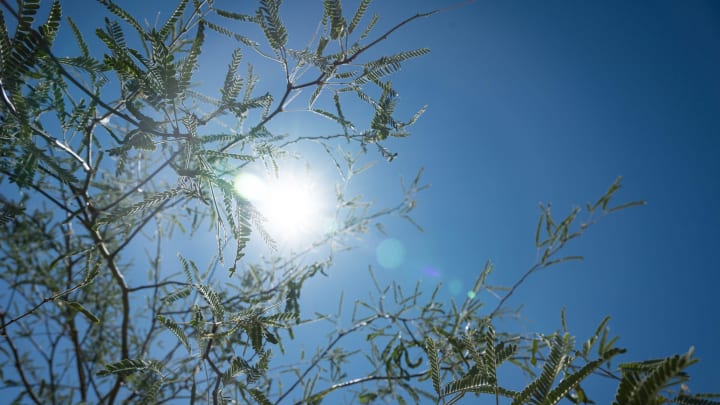How to Train Your Body to Survive Hot Summer Hiking Trips

With temperatures around the Earth on the rise, summers are becoming more brutal for adventurers. People who enjoy visiting national or state parks to go on hikes are deterred by just how hot it is outside.
The solution for many people is to just not go outside. Remaining indoors during times of high temperature is a good safety precaution to have.
Alas, some are determined to get those trips in. There are risks to going hiking and being in the sun with high temperatures as heat-induced illness could occur. There are tame side effects, such as being comfortable or dehydrated. But, in the most extreme situations, death can occur.
Luckily for those people who just can’t wait until the fall to get outside, there are ways for you to acclimate your body to the higher temperatures and make being outdoors in extreme heat bearable.
David Fifer, an associate professor of emergency medical care at Eastern Kentucky University, also doubles as a wilderness paramedic and coordinator for RedSTAR Wilderness EMS in Powell County, Kentucky, per Alisha McDarris of Outside Online.
He recently shared some tips on how you can acclimate to the heat. One of the benefits of heat acclimation, according to Seth Collings Hawkins, is more efficient sweating. More rapid sweating and the production of more sweat will occur, keeping your body cool and removing unnecessary body heat, as shared by Outside Online.
Another benefit is improved circulation. Keeping your heart rate lower means your heart isn’t working as hard and blood is pumped where it needs to be, such as your muscle, more efficiently.
To acclimate your body, Fifer suggests starting with walks. 20-minute walks can be expanded slowly into every day or alternating days. Over the span of a week or two, start adding 20 minutes each time.
This will put a strain on your body and it will start adjusting to the heat. Spending time in a sauna or hot tub will also help. But, the time it will take to acclimate varies on the person.
“Your baseline fitness is going to be a big factor in your acclimatization plan, and the more fit you are, the easier it’s going to be,” Fifer says.
Essentially, how good of shape you are in at the start of the process determines the length of time it will take. The better shape at the beginning, the faster it will go.
Of course, even people in peak physical condition and who have optimized their bodies with acclimated their bodies to the heat have limits.
“Hawkins cites studies that suggest that, no matter how acclimatized you are, your body can’t sustain a healthy core temperature when you’re in an environment hotter than 88°F and at 100 percent humidity. In 50 percent humidity, the limit is closer to 122°F, though the combination of temperature and exposure duration can both affect how well your body can acclimatize,” McDarris wrote.
Humidity plays a big part in your body adjusting to temperatures outside as well. Acclimating work done in a dry climate won’t translate well to a humid one and vice versa. During training, make sure you are replicating the conditions of where you will be adventuring as closely as possible.
On top of acclimating your body, don’t forget fuel for the trip. Water and electrolytes are a must to help stay hydrated on the trail.
